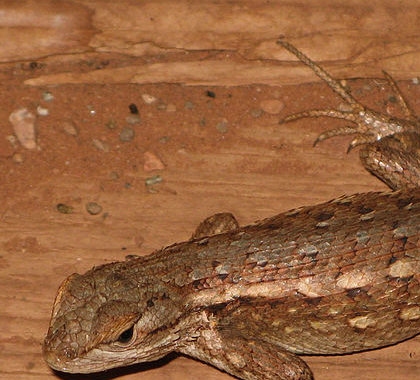Texans are once again engaged in a battle to protect both a tiny reptile—the dunes sagebrush lizard—and the giant Permian Basin oil and gas industry.
Texas Comptroller Glenn Hegar has proposed a complete overhaul of an eight-year-old effort to balance lizard conservation and oil and gas production, in response to a new effort by environmentalists to have the lizard listed as endangered under the 1973 Endangered Species Act (ESA).
FWS Approved
In 2010, then-Texas Comptroller Susan Combs worked with oil and gas operators, ranchers, and other interested parties to create the Texas Conservation Plan (TCP), which relies on voluntary actions to help preserve the lizard’s habitat. The U.S. Fish and Wildlife Service (FWS) determined the plan was sufficient to justify denying a petition to list the lizard as endangered under the ESA.
The growth of fracking, which uses a particular kind of sand to produce oil and gas, in the Permian Basin and statewide, has led to a significant increase in frac-sand mining in Texas.
With existing frac-sand mines expanding and new sand mines being proposed, the Center for Biological Diversity and Defenders of Wildlife again petitioned FWS to consider listing the dunes sagebrush lizard as endangered, arguing sand mining could affect the lizard’s habitat in ways unaccounted for in the TCP.
To prevent FWS from listing the species as endangered, Hegar has proposed scrapping the eight-year-old plan in favor of an entirely new conservation plan.
The new proposal eliminates some conservation options in the existing TCP, proposes new ways for companies to avoid impacting lizard habitat, and would enact fees on some companies operating in the lizard habitat to support conservation efforts and offset habitat disturbances.
‘Gaming the ESA’
Environmentalists have mastered the art of using the ESA to prevent economic development, says R. J. Smith, a senior fellow at the National Center for Public Policy Research.
“Environmentalists have a long history of gaming the ESA by seeking the most obscure species to stop development projects,” Smith said. “The less known about a species, the easier to justify a listing, because people cannot provide data to counter environmentalists’ arguments for listing.
“About half of the sand mining companies have been cooperating with the provisions of the voluntary Texas Conservation Plan,” said Smith. “Many are not thrilled with Hegar’s plan, preferring the new agreement to simply fix flaws in the existing plan, but nobody but environmentalists wants to see the dunes sagebrush lizard listed.”
Calls It a Power Grab
Former Texas Commission on Environmental Quality Chairman Kathleen Hartnett White, currently director of the Armstrong Center for Energy & the Environment at the Texas Public Policy Foundation, says the ESA is less about protecting species than controlling peoples’ property.
“The Endangered Species Act was written so as to grant government near-absolute power to dictate how landowners can use property,” Hartnett White said. “FWS’s ‘habitat’ requirements for threatened or endangered species claim large areas as habitat without evidence a particular species is even present on the land or has ever been present.
“FWS has not had a stellar history as far as accuracy in defining habitat or even in determining whether a particular species is actually threatened or endangered,” said Hartnett White.
Duggan Flanakin ([email protected]) writes from Austin, Texas.




